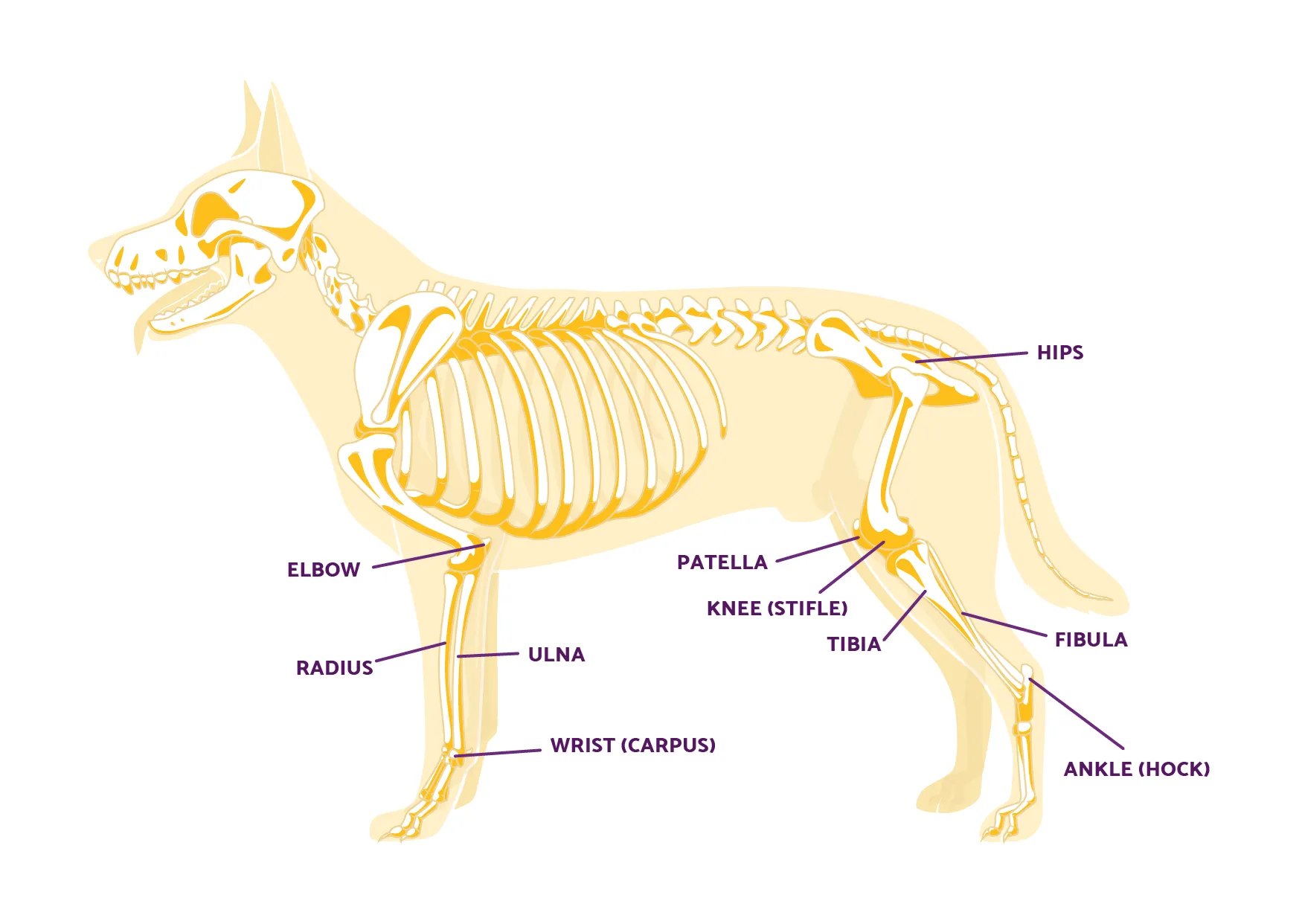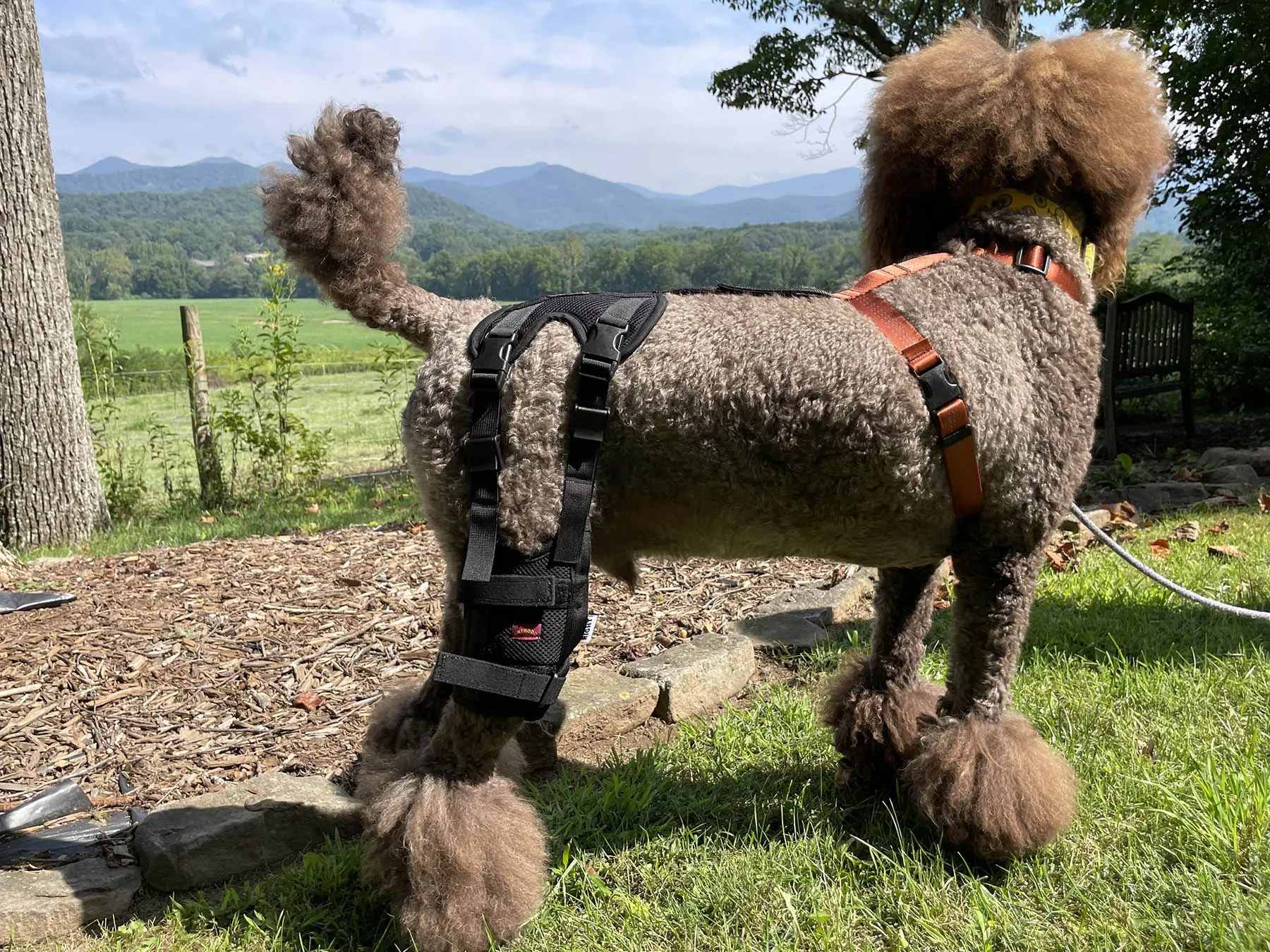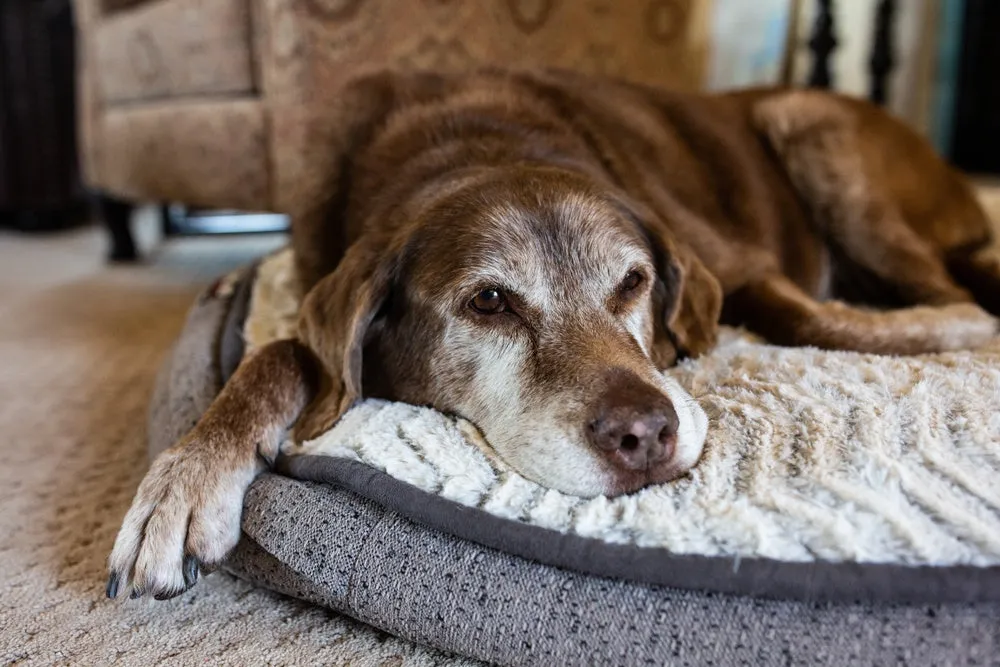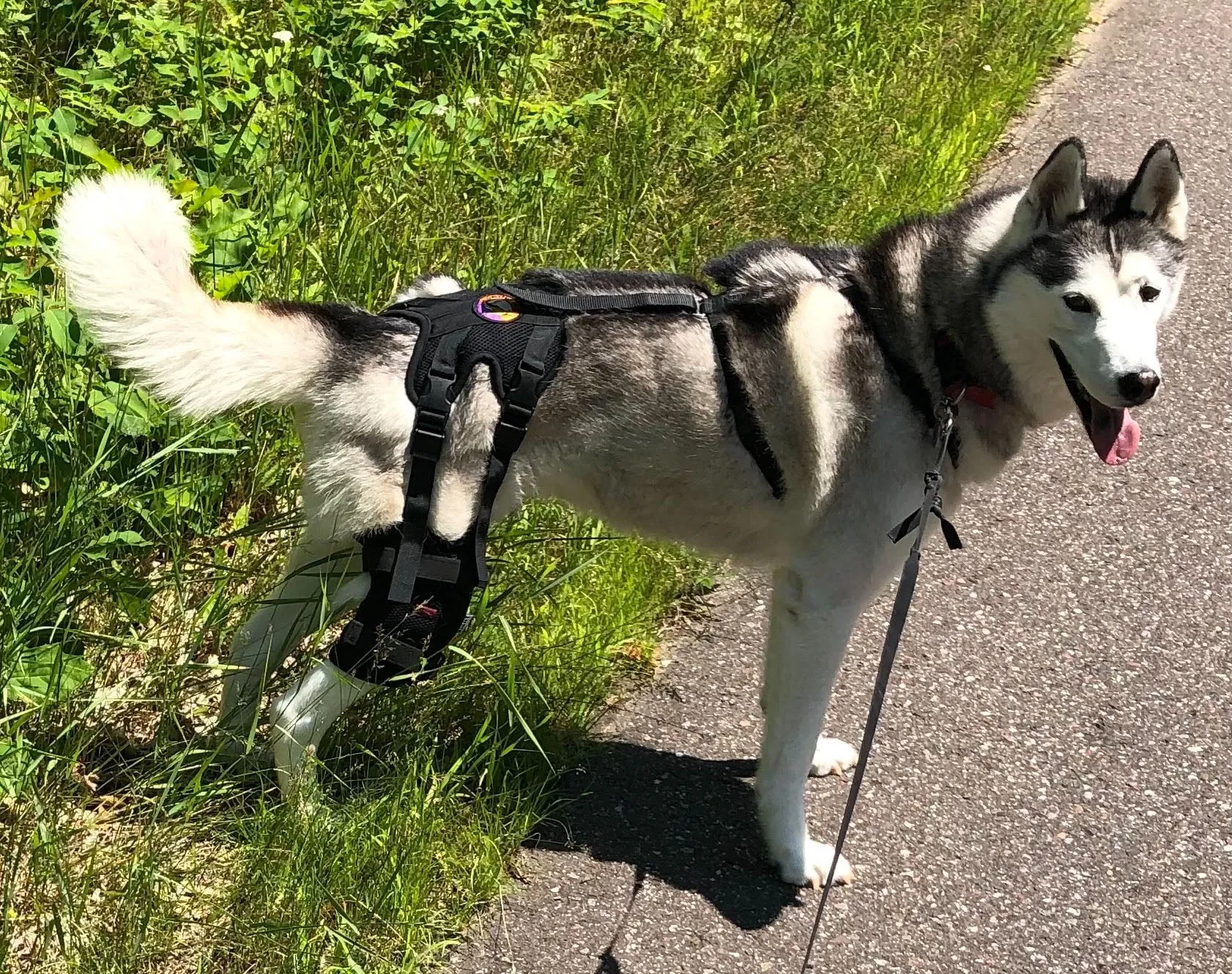A torn cranial cruciate ligament (CCL), commonly referred to as an ACL tear in dogs, is a frequent and often painful injury. While surgery is a common treatment, many owners wonder: can a dog’s knee ligament heal itself? This is a crucial question for pet parents seeking the best and least invasive care for their canine companions. Understanding the complexities of CCL tears and the available healing options is essential for making informed decisions about your dog’s health.
The journey to recovery for a dog with a CCL tear often begins with a veterinarian’s diagnosis. Once confirmed, a range of treatment pathways can be explored, from conservative management to surgical intervention. The goal is always to restore comfort and mobility, allowing your dog to return to a happy, active life. While the idea of natural healing is appealing, it’s important to approach this topic with accurate information and professional guidance.
can a cruciate ligament heal itself in dogs
Understanding Canine Knee Anatomy: CCL vs. ACL
When discussing knee injuries in dogs, it’s important to clarify the terminology. While humans have an Anterior Cruciate Ligament (ACL), dogs possess a Cranial Cruciate Ligament (CCL). These ligaments are vital for knee stability, preventing excessive forward movement of the tibia (shin bone) relative to the femur (thigh bone). A tear in the CCL can significantly impact a dog’s ability to walk, run, and play.
 Dog leg anatomy diagram showing dog bones and dog joints
Dog leg anatomy diagram showing dog bones and dog joints
Understanding the intricate structure of your dog’s knee joint, including the ligaments, muscles, and bones, can help you appreciate the severity of a CCL tear and the importance of proper treatment.
Why Pet Owners Explore CCL Tear Alternatives
Canine CCL surgery, while effective, can be an invasive and costly procedure. Many pet owners are actively seeking less intrusive and more budget-friendly treatment options. This has led to a growing interest in conservative management strategies, such as orthopedic dog braces and joint health supplements. These alternatives aim to support the healing process and stabilize the knee without surgical intervention.
The success rate of these non-surgical alternatives is highly dependent on various factors. These include the degree of the ligament tear, your dog’s age and overall health, their activity level, and any existing medical conditions or medications. A thorough consultation with your veterinarian is crucial to determine if your dog is a suitable candidate for these approaches.
How Dog Knee Braces Support Recovery
Orthopedic dog knee braces have emerged as a popular non-surgical solution for CCL injuries. These braces are designed to provide external support and stability to the knee joint, limiting excessive movement that could aggravate the tear and hinder healing. By immobilizing the joint to a certain extent, braces can help the body form scar tissue over the torn ligament, facilitating a natural healing process.
 Dog with torn ACL / CCL wearing dog knee brace for support
Dog with torn ACL / CCL wearing dog knee brace for support
The primary function of a canine knee brace is to restrict the flexion and extension of the knee, creating a more stable environment for healing. This can significantly reduce pain and discomfort, allowing your dog to gradually return to pain-free activities. For many dogs, a well-fitted brace can be a game-changer, offering a less stressful path to recovery.
can a cruciate ligament heal itself in dogs
Exploring Other Canine CCL Surgery Alternatives
Beyond knee braces, a variety of other conservative treatment modalities can complement the recovery of a dog with a CCL tear. These may include:
- Acupuncture: This traditional therapy can help manage pain and inflammation.
- Supplements: Joint supplements containing ingredients like fish oil, turmeric, and glucosamine can support joint health and reduce inflammation.
- Hydrotherapy/Swimming: Gentle exercise in water can help maintain muscle mass and improve joint mobility without putting excessive stress on the injured leg.
- Massage Therapy: Therapeutic massage can help alleviate muscle tension and improve circulation around the injured area.
It is essential to discuss the pros and cons of each of these options with your veterinarian to create a comprehensive treatment plan tailored to your dog’s specific needs.
Understanding the Costs of Dog CCL Surgery
When surgical intervention is deemed the best course of action for a dog’s CCL tear, there are several common orthopedic procedures. Each has its own set of benefits, risks, and associated costs. The main surgical options include:
Lateral Suture Technique (Extracapsular Repair): This procedure involves placing a strong synthetic suture material around the outside of the joint to stabilize it. The cost typically ranges from $1,100 to $2,500.
Tibial Plateau Leveling Osteotomy (TPLO): TPLO surgery alters the angle of the tibial plateau to neutralize the forces that cause instability. This technique aims to make the CCL redundant. TPLO surgery is generally more expensive, with costs ranging from $3,000 to $6,000.
Tibial Tuberosity Advancement (TTA): Similar to TPLO, TTA surgery modifies the biomechanics of the knee to eliminate the need for the CCL. This involves surgically advancing a portion of the tibia. TTA surgery typically costs between $3,500 and $4,500.
In addition to the financial investment, it’s important to consider the significant commitment of time and dedication required for post-operative care and rehabilitation. Recovery from CCL surgery often involves strict rest and limited activity for 8 to 12 weeks, demanding patience and diligent adherence to your vet’s instructions.
Causes and Symptoms of Dog Torn CCL
Unlike in human athletes where ACL tears are often acute traumatic events, CCL tears in dogs typically develop more gradually. They are often the result of a buildup of repetitive stress and minor injuries over time, exacerbated by everyday activities like playing or chasing. Several factors can predispose a dog to CCL tears:
- Inconsistent Exercise: A lack of regular, moderate exercise can lead to weakened muscles that support the knee.
- Overweight or Obesity: Excess weight places significant strain on the knee joints, increasing the risk of ligament damage.
- Overexertion: Sudden, intense bursts of activity without proper conditioning can lead to injury.
- Age: As dogs age, their ligaments can lose elasticity and become more prone to tearing.
The severity of the CCL tear directly influences the symptoms your dog may exhibit. However, a hallmark sign is limping or lameness, where your dog begins to favor their uninjured leg. This uneven weight distribution can, unfortunately, lead to increased stress on the opposite knee, making a CCL tear in the other leg a common occurrence in approximately 60% of cases.
Other symptoms to watch for include:
- Abnormal posture or sitting positions.
- Swelling and inflammation around the knee joint.
- Reluctance to jump, run, or play.
- Stiffness, especially after rest.
 Sad dog
Sad dog
Seeking Expert Advice for Your Dog’s Knee Health
When it comes to your dog’s health, consulting with a licensed veterinarian is paramount. They possess the expertise to accurately diagnose the severity of a CCL tear and recommend the most appropriate treatment plan. Whether surgery is necessary or if conservative approaches are suitable, your vet will guide you through all available options.
 Husky wearing dog knee brace for support and stability of ACL / CCL tear in dog
Husky wearing dog knee brace for support and stability of ACL / CCL tear in dog
If you and your veterinarian determine that an orthopedic dog knee brace is the right solution for your furry friend, explore options designed to provide optimal support and stability. The aim is to help your dog return to comfortable, pain-free playtime. For further questions regarding whether an orthopedic brace is the best choice for your dog’s specific injury, please do not hesitate to reach out. We are dedicated to helping all our canine companions enjoy a life free from pain.
